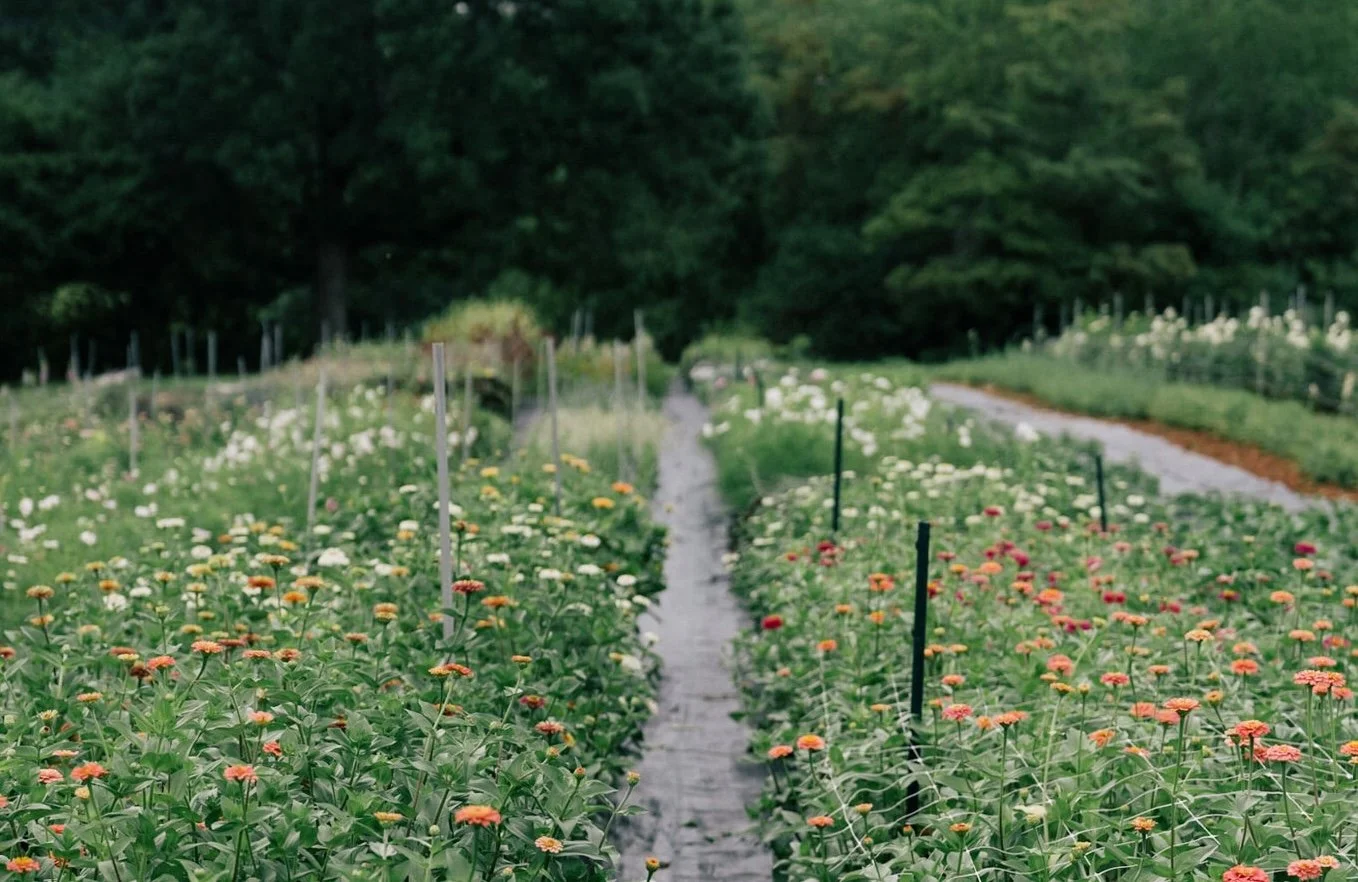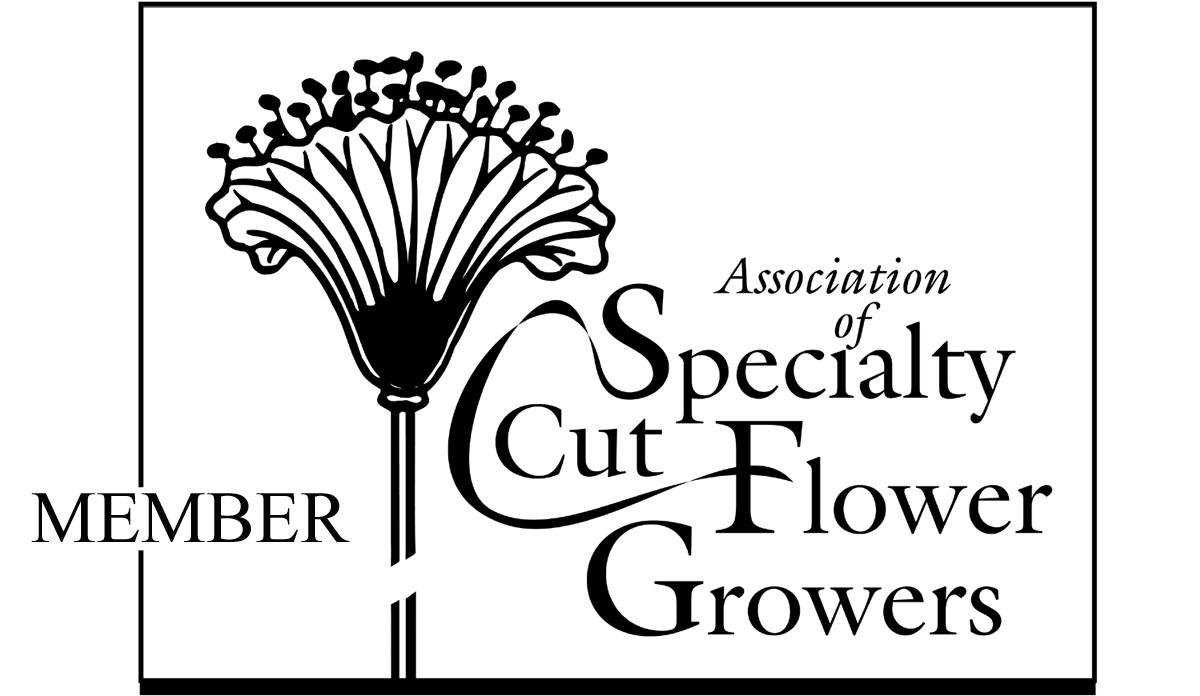Troubleshooting Common Garden Problems, Pests & Diseases
/Every growing season brings its own magic, and its own set of challenges. Whether it’s deer nibbling new transplants, Japanese beetles chewing holes through blooms, or powdery mildew creeping in as the humidity rises, we’ve learned that healthy flower farming is as much about resilience as it is about beauty.
At Flourish, we try to stay ahead of common issues with a mix of organic practices, observation, and a little trial and error. Over the years, we’ve found that small adjustments and proactive planning often make the biggest difference.
Here’s a closer look at how we troubleshoot four of the most common flower-growing problems in our fields, plus a few of the systems and tools that help us keep the blooms coming.
Deer Damage
Deer are beautiful creatures… but they can do serious damage in a flower field. They seem especially drawn to tender young plants and can wipe out whole beds overnight if given the chance.
What Works For Us: Fencing
Early in the growing season, we use a moveable electric fence to help protect vulnerable areas of the farm. We use a movable fence system which is easy to maintain, and can be set up solo (though its always nice to have extra hands). This 3D Anti-Deer Electric Fence system works well for us because we can move it to different fields, depending on the time of year and what we need to protect, and it is much more cost-effective for us than building a barrier fence.
How it works: Deer experience “landing anxiety” before they decide to jump over something. So, when facing a fence that has height, length and depth, deer are more tentative than with a fence that’s only “2D” (tall and wide, but not deep). When a deer encounters a 3D fence, they are more likely to approach it cautiously. They will check it with their sensitive noses and receive a memorable electric shock (scent caps are attached to the electrified rope at intervals to entice deer to first touch the rope with their noses). The pain encourages deer to find a less risky area to graze.
The only 100% deer barrier is a solid wall at least 8 ft tall! A hungry animal may risk the pain, which is why you can’t keep out starving deer with electric fencing if the site is their only food source.
Other Strategies to Try:
Motion-activated sprinklers or lights to startle nighttime grazers
Scents or sprays made with garlic, peppermint oil, or predator urine
Physical barriers like row cover or netting for smaller garden areas
Planting deterrents like yarrow or herbs (deer often avoid strongly scented plants) around the perimeter
Japanese Beetles
These shiny little beetles may look pretty, but they’re relentless when they show up in numbers. They chew through petals, leaves, and buds, often targeting zinnias, roses, and other favorites – decimating a crop within days.
What Works For Us: Soil Health
Japanese beetles aren’t typically a major issue for us at Flourish, and I believe that’s largely thanks to our focus on long-term soil health. Healthy, balanced soil leads to stronger, more resilient plants, which are naturally better able to withstand pest pressure. Healthy soil also supports microbes, fungi, and beneficial insects.
Several years ago, we treated our growing fields with milky spore and beneficial nematodes, both organic methods that target beetle larvae in the soil. Since then, we’ve seen a dramatic decrease in adult beetles, to the point where they’ve barely made an appearance for the past few seasons.
That said, we’ve started to notice a few more Japanese beetles creeping back in this year. It’s a good reminder that organic pest control isn’t a one-and-done solution. It’s an ongoing process that needs observation and occasional rebalancing. Arbico Organics is our go-to resource for beneficial insects.
Other Strategies to Try:
Hand-picking beetles in the early morning while they’re still sluggish. Drop them into a jar of soapy water to dispatch them quickly and naturally.
Neem oil or spinosad sprays, used carefully and only during early morning or evening to avoid harming pollinators.
Avoid using beetle traps! While it’s tempting, research shows that they actually attract more beetles than they catch, creating a bigger problem than you started with.
Powdery Mildew
This one is almost unavoidable for us here in Western North Carolina, and pretty much anywhere in the southeastern US. With our hot, humid summers, powdery mildew is a regular visitor, especially on zinnias, dahlias, and other densely growing crops. While powdery mildew doesn’t usually kill plants outright, it does weaken them and reduces bloom quality over time.
What Works For Us: Succession Planting
Instead of trying to endlessly fight mildew on aging plants, we focus on regularly replanting new successions in our flower field and high tunnels. This means we always have fresh, vigorous crops coming in just as older ones begin to fade or show signs of disease. It’s one of the simplest and most effective strategies we use. We generally don’t worry about powdery mildew on crops like zinnias, which we succession plant 3-4 times in a season, but we do treat for it when we notice powdery mildew on our dahlia crop. That crop is too valuable to leave untreated so we use MilStop, an organic potassium bicarbonate product.
Other helpful practices:
Plant spacing. Good airflow can dramatically slow the spread of mildew.
Water at the base of plants, not overhead, to keep foliage dry. (See our irrigation tips here!)
Remove infected foliage regularly to reduce spread.
DIY sprays made with potassium bicarbonate, milk and water, or diluted hydrogen peroxide can help if used early and consistently.
General Pest Control Tips
Beyond these specific issues, here are a few more organic habits that help us stay ahead of common pest and disease problems throughout the season:
Start with healthy soil. Strong plants are naturally more resistant to stress and pests.
Rotate crops. Changing what’s planted in a bed from year to year disrupts pest life cycles.
Use landscape fabric or mulch to suppress weeds and reduce spreading soil-borne diseases.
Invite beneficial insects by planting native flowers and herbs like dill, fennel, and alyssum nearby.
Observe daily. A short walk through your garden with pruners and a careful eye can prevent problems before they take hold.
No garden is perfect, and that’s part of the joy of growing. Each season teaches us something new, and the challenges often make the harvest feel even sweeter.
What’s your biggest garden pest or challenge, and what’s worked for you?










